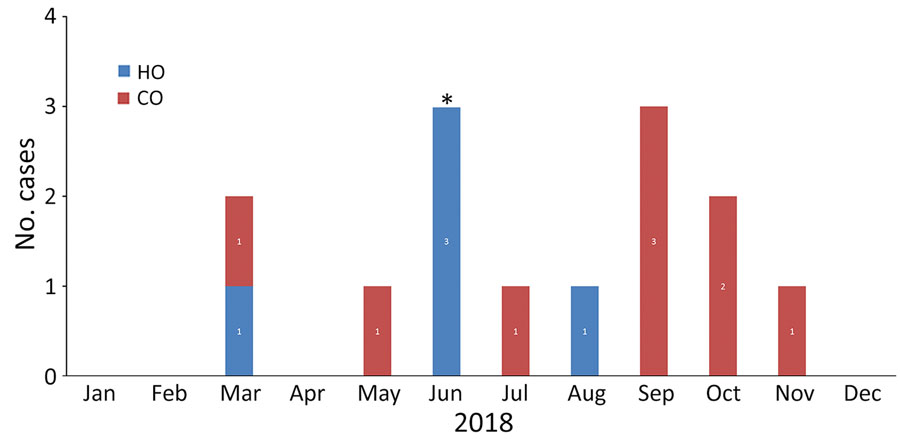Volume 26, Number 11—November 2020
Dispatch
KPC-3–Producing Serratia marcescens Outbreak between Acute and Long-Term Care Facilities, Florida, USA
Figure 1

Figure 1. Epidemic curve of carbapenemase-producing Serratia marcescens infections by month in 2 hospitals of a large healthcare system in Miami, Florida, USA, 2018. Asterisk (*) indicates the implementation of new interventions in response to the outbreak. CO, community-onset; HO, hospital-onset.
Page created: September 15, 2020
Page updated: October 19, 2020
Page reviewed: October 19, 2020
The conclusions, findings, and opinions expressed by authors contributing to this journal do not necessarily reflect the official position of the U.S. Department of Health and Human Services, the Public Health Service, the Centers for Disease Control and Prevention, or the authors' affiliated institutions. Use of trade names is for identification only and does not imply endorsement by any of the groups named above.